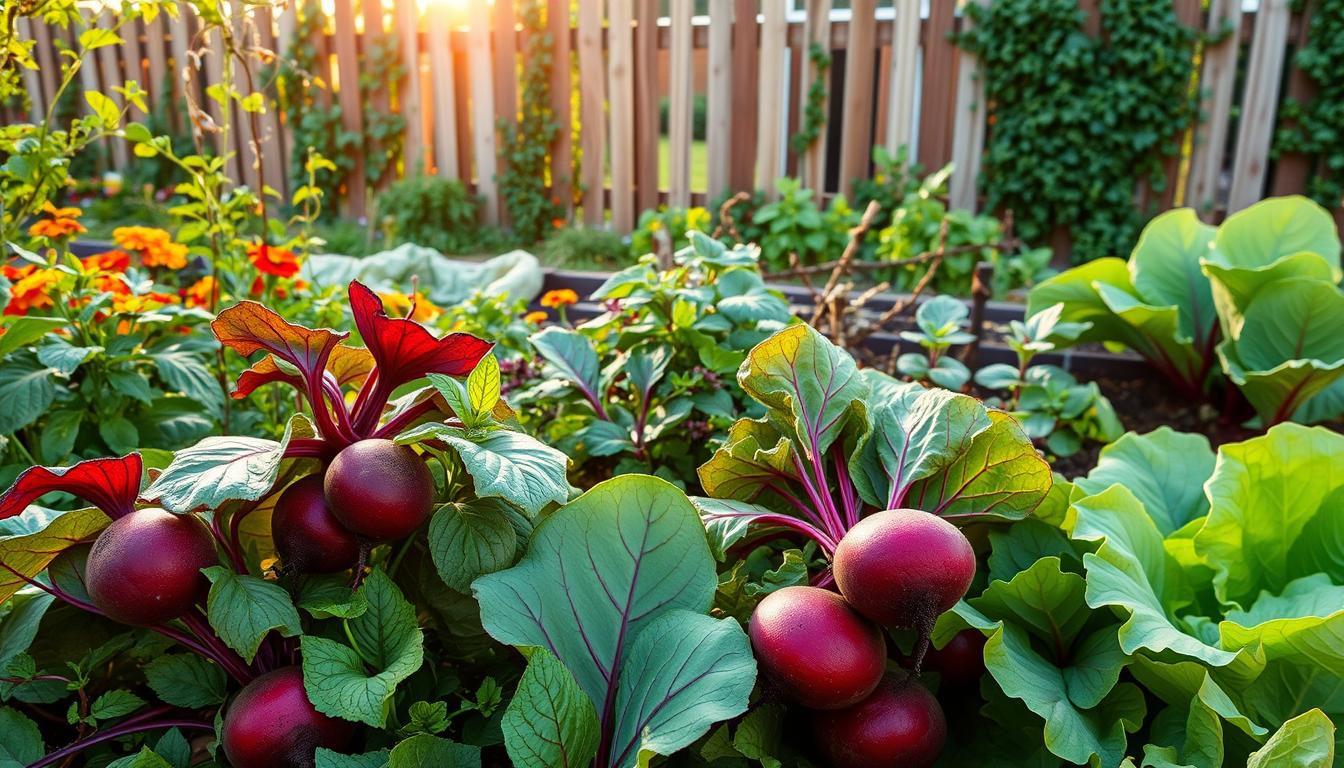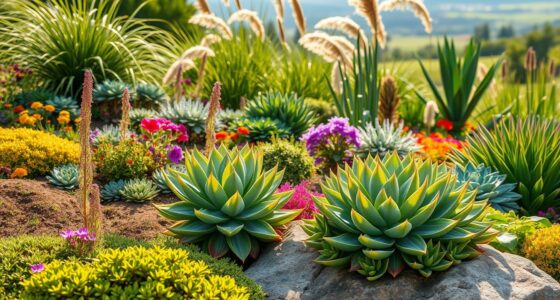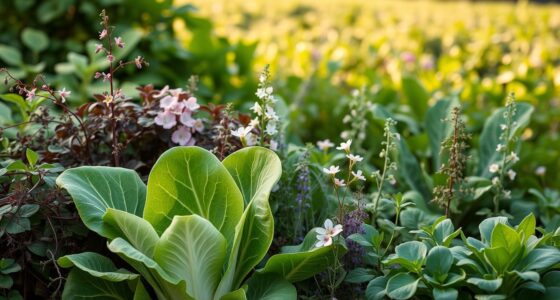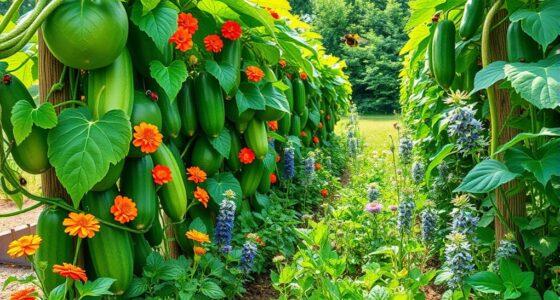Imagine standing in your garden, surrounded by the vibrant colors of vegetables and herbs all working in harmony. This beautiful scene isn’t just luck; it’s the result of companion planting for beets. By pairing your beets with the right companions, you’re not only maximizing growth but also enriching flavors and protecting against pests. The thrill of witnessing your beet companion plants flourish alongside each other is truly rewarding, making your gardening experience even more fulfilling. Together, let’s explore how you can optimize your garden and create a thriving ecosystem that benefits you and your plants alike.
Key Takeaways
- Companion planting for beets fosters a healthier garden ecosystem.
- Choosing the right beet companion plants enhances growth and flavor.
- Strategically pairing plants can deter pests effectively.
- Understanding companions is key to optimizing your garden.
- Seasonal awareness is crucial for successful planting.
What Are Companion Plants?
Companion plants are specific species grown together to create mutually beneficial relationships. Understanding these partnerships can significantly enhance your gardening experience. Benefits of companion planting include improved growth conditions, efficient use of space, and natural methods for pest control.
Understanding Companion Plant Benefits
The right combination of plants works together to improve overall health and yield. Certain companion plants provide shade, while others attract beneficial insects or pollinators. These interactions can strengthen plants, leading to heartier crops.
Enhancing Growth and Flavor
Not only do companion plants help grow robust vegetables, but they also enhance flavors. For example, planting aromatic herbs near vegetables can elevate their taste while providing essential nutrients and support.
Pest Control through Companionship
Many gardeners rely on companion planting for effective pest control. Certain plants release oils or compounds that naturally repel harmful insects. By strategically placing these companion plants, you can reduce the likelihood of pest infestations in your vegetable patches.
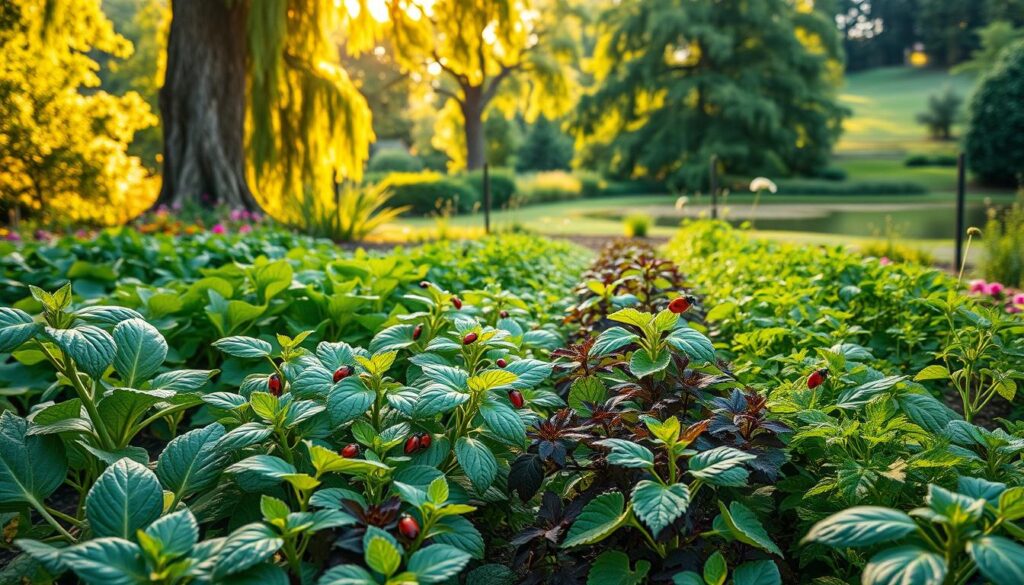
Best Companion Plants for Beets
Creating a flourishing garden requires understanding the best companion plants for beets. Certain plants enhance the growth, flavor, and health of beets while providing protection against pests. Below are key allies in your beet gardening journey.
Carrots: A Perfect Pair
Carrots and beets share similar growing conditions, making them an excellent duo. Both prefer well-drained soil and similar moisture levels, allowing them to thrive together without competing for resources. The intertwining of their roots helps aerate the soil, promoting healthy growth. You will discover that planting carrots alongside beets enhances flavor profiles and maximizes your garden space.
Garlic: Ward Off Pests
Garlic stands out as a powerful companion for beets. Its potent scent acts as a natural deterrent for pests like aphids and cutworms. When growing garlic near beets, you create an invisible shield against common garden threats. This relationship fosters healthier beets while minimizing the need for chemical interventions, allowing you to maintain a vibrant and organic garden environment.
Onions: Share the Space
Onions complement beets remarkably well. Both plants can coexist without overlapping root systems, ensuring that they do not compete for nutrients. The sulfur compounds released by onions also possess pest-repelling properties, benefiting your overall beet crop. By intermingling onions and beets, you create a harmonious garden that enhances growth while protecting various crops.
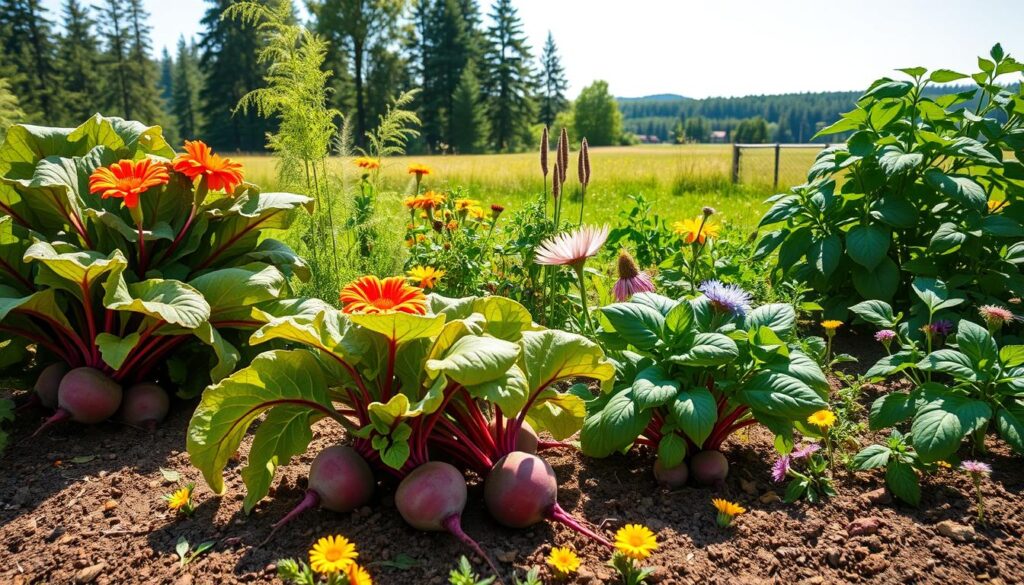
| Plant | Benefits |
|---|---|
| Carrots | Improve soil aeration and texture; enhance flavor |
| Garlic | Repels pests such as aphids and cutworms |
| Onions | Provides nutrient harmony and pest deterrence |
Companion Plants to Avoid with Beets
While it is essential to choose beneficial companion plants for your beets, certain plants should be avoided to ensure optimal growth and health. Understanding which plants to avoid with beets can help you maintain a thriving garden.
Nightshades: A Risky Choice
Nightshades, including tomatoes and potatoes, often compete for the same nutrients that beets require. Planting these together may lead to nutrient deficiencies, ultimately affecting beet growth and flavor. Additionally, some nightshades are known to attract pests that could harm beets, making them risky companions.
Brassicas: Compete for Nutrients
Brassicas, such as broccoli and cabbage, are notorious for their nutrient competition. They tend to leach essential nutrients from the soil that beets rely on for strong development. Furthermore, the compounds released by brassicas can inhibit beet seed germination, leading to a failed crop if planted too closely.
Others to Stay Away From
In addition to nightshades and brassicas, other plants to avoid with beets include certain herbs like fennel and strong-scented varieties. These can produce chemicals in the soil that hinder beet growth and discourage beneficial insects that might aid in pest control.
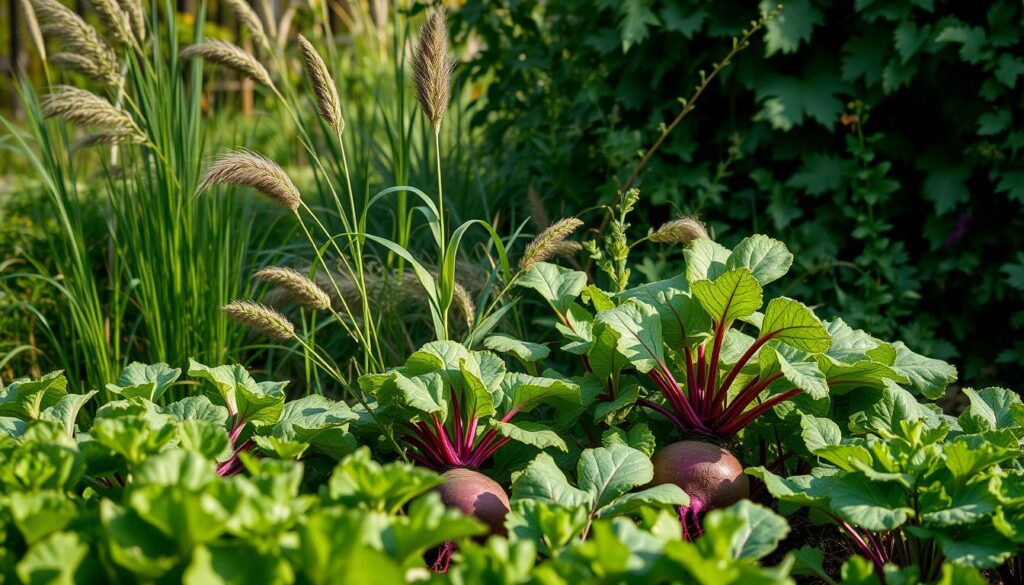
Soil and Nutrient Considerations
Understanding how beets interact with soil quality is vital for a thriving garden. Beets can significantly improve soil quality as their deep roots penetrate the earth, creating channels that enhance aeration and structure. This contributes to an ideal growing environment for various companion plants, which often have diverse nutrient needs. Recognizing the importance of balancing soil nutrients can lead to a more productive garden.
How Beets Affect Soil Quality
Beets thrive in loamy soil rich in potassium and phosphorus. As they grow, they help to aerate the soil, allowing better water retention and nutrient distribution. This improved soil quality for beets benefits not only their growth but also that of surrounding companion plants. The rich organic matter left by beets after harvesting further enriches the soil, making it inviting for future crops.
Nutrient Needs of Companion Plants
Companion plants play an essential role in your garden’s ecosystem. While beets require specific nutrients, companion plants may have their own distinct nutrient needs. Planning for these varying requirements is crucial for avoiding competition and ensuring all plants flourish. By understanding what each plant requires, you can create a harmonious growing environment that promotes healthy growth.
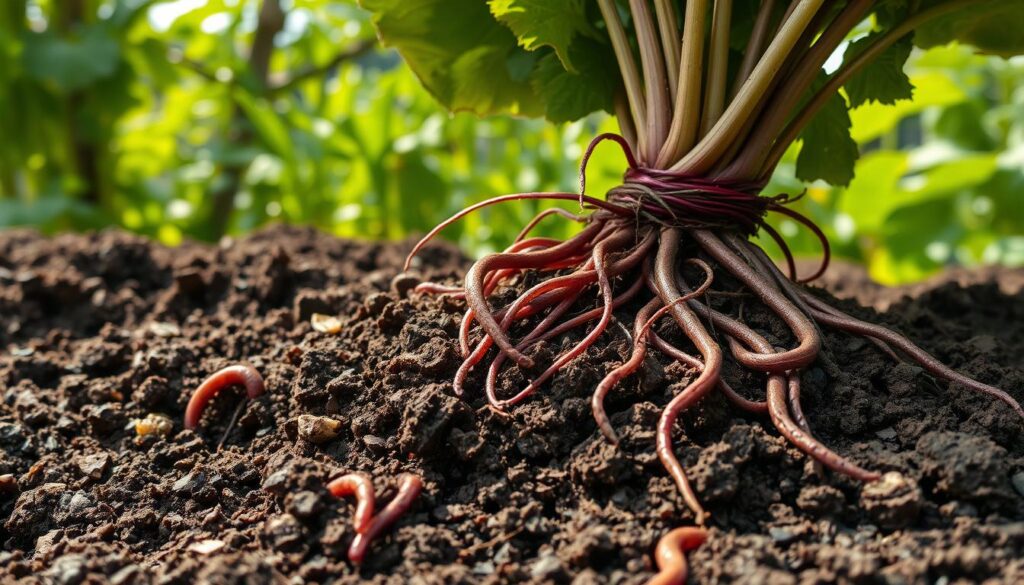
Planting Strategies for Companion Plants
Implementing effective planting strategies for beets significantly enhances your garden’s productivity. You can achieve this through clever techniques like succession planting and intercropping. These methods not only optimize space but also ensure that your plants flourish together, maximizing the benefits of companionship.
Succession Planting
Succession planting involves rotating crops to keep your garden lively throughout the growing season. This method allows you to utilize the same plot of land efficiently, generating continuous harvests of beets and their companions. For instance, after you harvest an early crop of beets, you can immediately plant another batch or introduce a quick-growing plant such as radishes. Such rotations help maintain soil health and prevent it from becoming depleted.
Intercropping Techniques
Intercropping focuses on growing two or more plant species in close proximity to exploit the garden’s resources effectively. When you interplant lettuce with beets, it promotes a symbiotic relationship where lettuce matures quickly and provides ground cover, thus limiting weed growth around beets. This technique contributes to a balanced garden ecosystem while enhancing the overall yield.

Benefits of Companion Planting
Companion planting offers numerous advantages that can significantly enhance your gardening experience. By strategically growing compatible plants together, you can enjoy a more productive and resilient garden while reaping the rewards of creativity and nature’s balance.
Maximizing Space in Your Garden
One of the primary benefits of companion planting is the effective use of available space. By planting diverse crops in close proximity, you can achieve a higher yield in restricted areas. This method minimizes wasted space and encourages plants to capitalize on each other’s strengths. Using vertical gardening techniques, such as trellises or stacking pots, further aids in maximizing garden space and using every square inch wisely.
Encouraging Biodiversity
Companion planting fosters biodiversity, which is crucial for maintaining a healthy ecosystem within your garden. A diverse array of plants attracts beneficial insects and pollinators while deterring pests. As you mix different plant types, you create an environment that nurtures useful organisms, such as predatory insects and earthworms. This natural balance not only enhances soil health but also promotes a thriving community of plants that support each other throughout their growth cycles.

Seasonal Planting Tips for Beets
When planning your garden, understanding the timing for seasonal planting for beets is essential. Beets thrive in cooler weather, making the best seasons for beet planting spring and fall. To maximize your garden’s potential, consider how companion plants fit into this timeline.
Best Seasons for Beet Planting
Spring and fall offer optimal conditions for planting beets. During these seasons, you can ensure your beets receive the cool temperatures they need to develop sweet flavors while avoiding bolting. Be mindful of your local climate when determining specific planting dates.
Timing Companion Plants
Coordinating the planting of companion plants is vital for maximizing garden space. Many companion plants can be sown before or after you plant beets. This creates a thriving ecosystem while minimizing competition. Start certain crops early in the spring to allow for a staggered harvest, or plant them later to complement your beet growth.
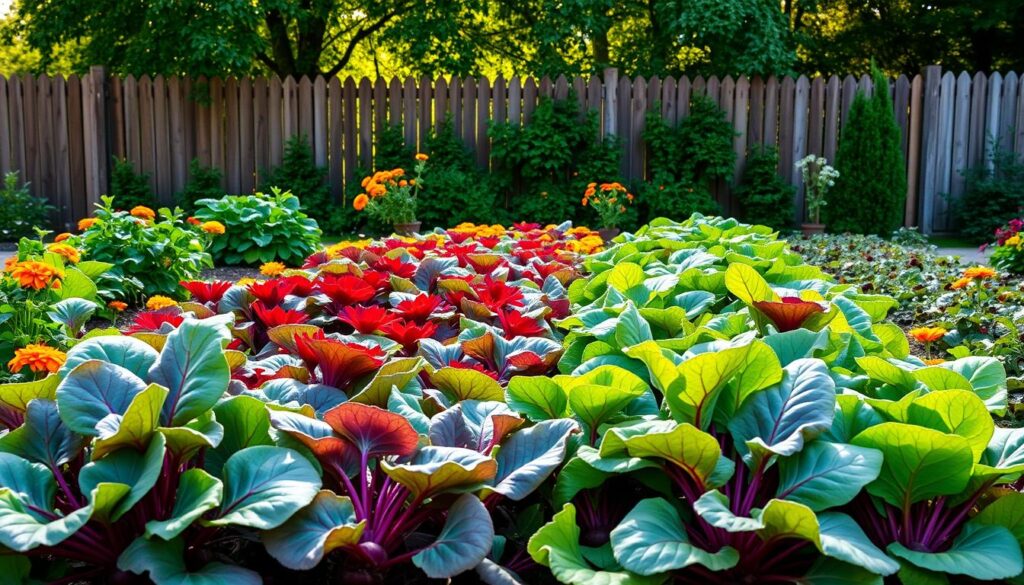
Watering and Maintenance
Proper care for your garden is crucial, particularly when it comes to watering beets and their companion plants. Both types of crops require different amounts of moisture to thrive. Understanding their water needs ensures that each plant can reach its full potential.
Water Needs for Beets and Their Friends
Beets typically require more water than many companion plants. It is essential to keep the soil consistently moist, especially during dry spells. On the other hand, some companion plants might need less water, making it essential to check their moisture requirements regularly. Here are some key points to consider:
- Water beets deeply to encourage root growth, aiming for about one inch of water per week.
- Monitor soil moisture levels regularly to avoid under or over-watering.
- Group plants with similar watering needs to simplify garden maintenance.
Companion Plant Care Guidelines
Implementing proper companion plant care can significantly enhance the vitality of your beet garden. By following these guidelines, you can create a thriving environment for all your plants:
- Mulch around the base of your plants to retain moisture and suppress weeds.
- Fertilize as needed, considering the specific nutrient needs of both beets and their companions.
- Regularly prune strained foliage to promote airflow and reduce disease risk.
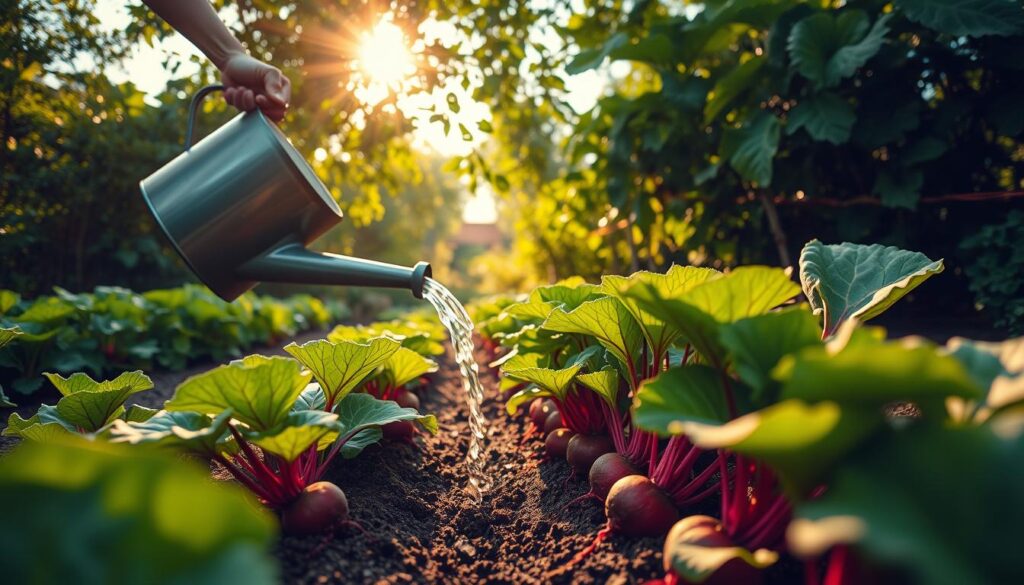
Harvesting Your Beets and Companions
Knowing when to begin harvesting beets can significantly enhance the quality of your crops. Recognizing signs of beet readiness is essential for ensuring you pick them at their peak. Similarly, the optimal timing harvest of companion plants will allow you to enjoy an abundant and diverse yield from your garden. Understanding these factors can lead to a rewarding harvest and flavorful produce.
Signs Your Beets Are Ready
As your beets grow, there are several signs of beet readiness to observe. Look for the following indicators:
- Roots that have reached at least 1-3 inches in diameter.
- Leaves that are healthy and vibrant green.
- Foliage starting to wilt slightly, indicating the beets are focusing their energy on root development.
Timing the Harvest of Companion Plants
The timing harvest for companion plants will differ based on their growth patterns. Here are some common companions and their harvest timing:
| Companion Plant | Time to Harvest |
|---|---|
| Carrots | 70-80 days after planting |
| Garlic | 8-9 months after planting |
| Onions | 100-120 days after planting |
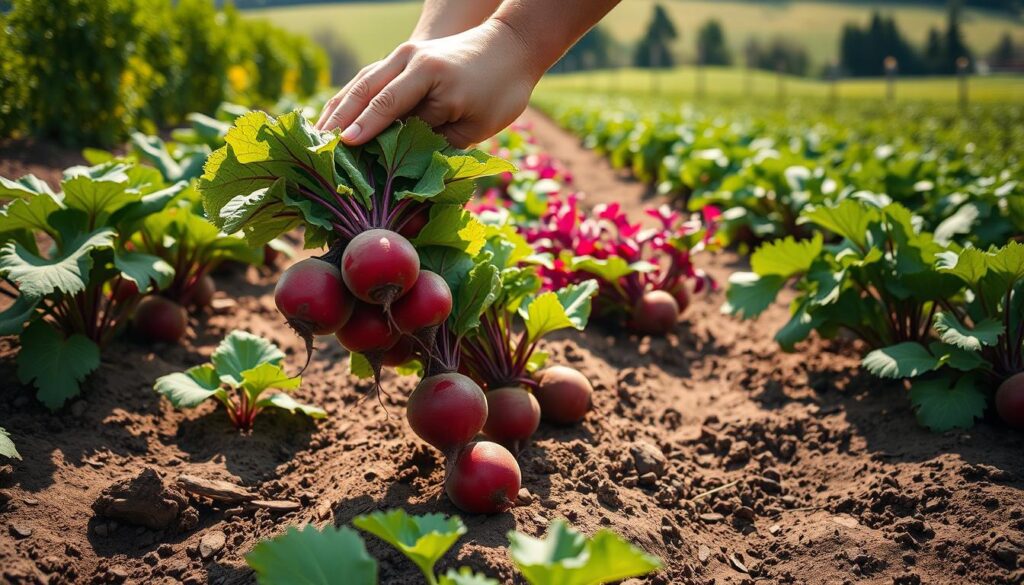
Being aware of these timelines and signs will help you coordinate your harvest for the best results. Enjoy the fruits of your labor and the delightful array of fresh, flavorful vegetables from your garden!
Troubleshooting Common Issues
Addressing challenges in your beet garden is vital for achieving a healthy and productive crop. Awareness of the common pests and diseases in beets allows you to take proactive measures. Implementing effective pest control strategies and maintaining vigilant care can lead to a thriving beet garden.
Pests That Affect Beets
Beets face threats from several pests that can hinder their growth and yield. Common culprits include:
- Aphids: These small insects suck sap from beet leaves, weakening the plants.
- Leaf miners: Their larvae create tunnels in leaves, causing significant damage.
- Flea beetles: These pests create small holes in leaves, compromising their overall health.
Implementing pest control methods such as companion planting can help deter these pests. Plants like garlic and carrots can naturally repel aphids and other harmful insects, providing a safer environment for your beets.
Diseases and How to Combat Them
Being vigilant about diseases in beets will keep your harvest plentiful. Common diseases include:
- Powdery mildew: This fungus appears as white spots on leaves, signaling a need for improved air circulation.
- Downy mildew: It thrives in damp conditions, causing yellowing and wilting of leaves.
- Root rot: Overwatering can lead to this condition, preventing proper nutrient absorption.
To combat diseases, ensure that you practice proper watering techniques and maintain optimal soil health. Rotate your crops each season to minimize the recurrence of diseases and promote a robust beet harvest.
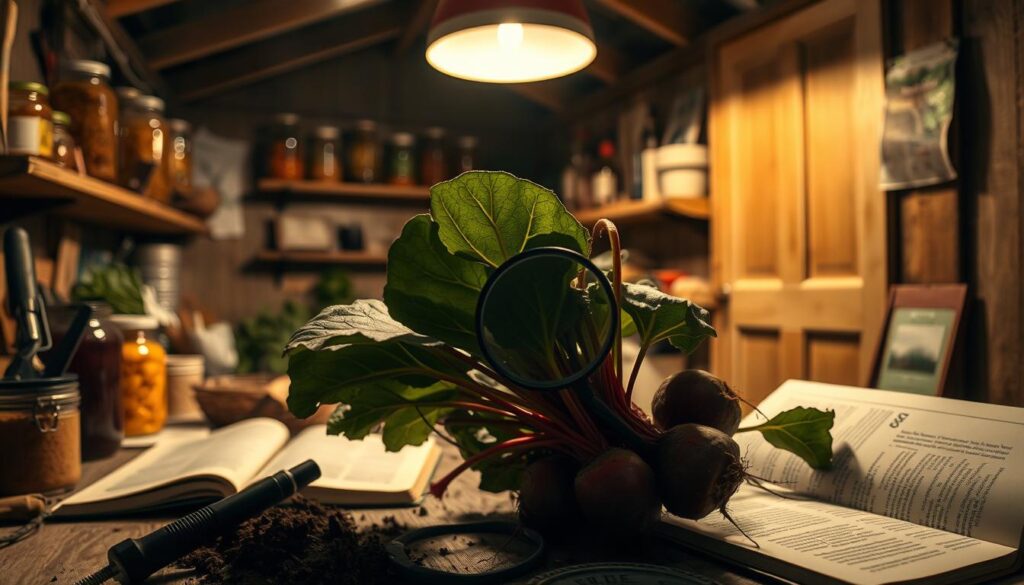
Using Companion Planting in Containers
Container gardening is an incredible way to experience the joys of growing your own food, especially when you incorporate companion planting with beets. This method allows you to maximize limited space, keeping your plants healthy and thriving. By understanding the ideal pairings for container gardening with beets, you can create a vibrant and productive garden right on your balcony or patio.
Ideal Container Pairings
Selecting the right companions for your beets can enhance their growth and flavor. Consider these plants to grow alongside your beets:
- Carrots: Both beets and carrots prefer similar growing conditions, making them excellent companions in containers.
- Garlic: This strong-smelling herb deters pests while promoting healthy growth for your beets.
- Onions: Their presence can help boost beet production while minimizing pest issues.
Managing Space Limitations
Utilizing companion planting in containers requires careful management of space and resources. Here are some tips:
- Choose smaller containers for each plant to prevent overcrowding and ensure proper air circulation.
- Monitor watering frequently, since containers tend to dry out more quickly than garden beds.
- Fertilize according to the needs of each plant to maintain nutrient levels in the confined environment.
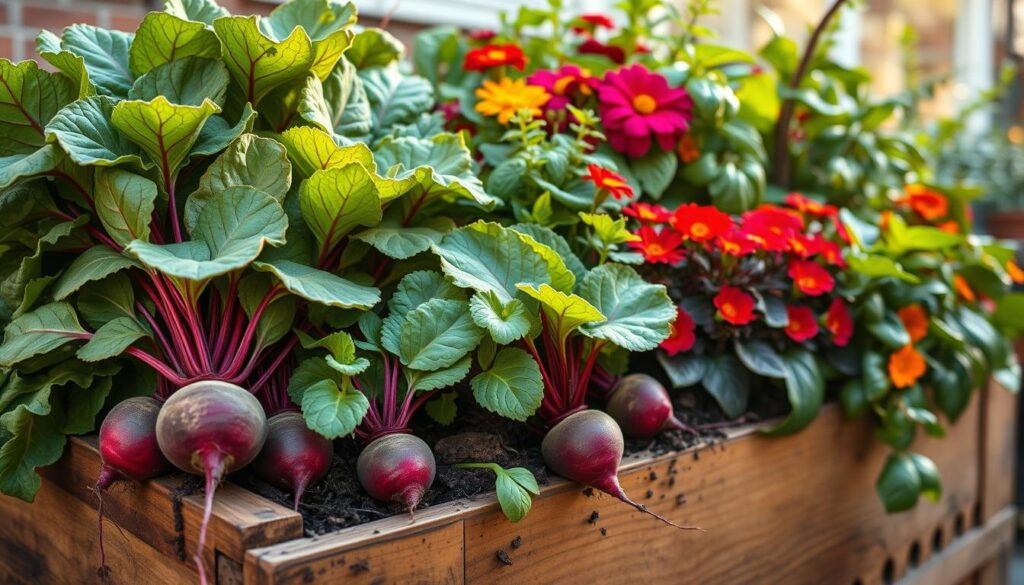
By implementing these strategies, you can successfully enjoy the benefits of companion planting in containers, cultivating a delicious and diverse garden even in small spaces. Happy gardening!
Resource Recommendations for Further Learning
Enhancing your knowledge about companion planting can significantly improve your gardening experience. A variety of companion planting resources are available, offering insights and practical tips to help you cultivate a thriving garden. Here are some suggested gardening books and online gardening communities that serve as valuable assets for both novice and seasoned gardeners.
Books on Companion Planting
- The Vegetables We Eat by Gail Gibbons: This book provides a thorough understanding of various vegetables and their benefits when planted alongside others.
- Carrots Love Tomatoes by Louise Riotte: A classic that explores the relationships between plants and their companions, making it a must-read for any serious gardener.
- Companion Planting for Beginners by Michael P. Garvey: A user-friendly guide focusing on companion planting strategies that boost garden health and productivity.
Online Gardening Communities
- Reddit Gardeners: A vibrant community where you can discuss ideas, ask questions, and share experiences related to companion planting.
- GardenWeb: This platform hosts numerous forums dedicated to various gardening topics, including specific threads on companion planting strategies.
- Facebook Groups: There are several active gardening groups on Facebook that focus on companion planting and share personal tips, successes, and challenges.

Conclusion: A Thriving Garden with Beets and Companions
Bringing together beets and their companion plants offers a multitude of benefits that contribute to a thriving garden. You not only witness enhanced growth and flavor in your beets but also enjoy the natural pest control that many companion plants provide. This synergy between species optimizes your garden space, allowing each plant to thrive while minimizing competition for nutrients.
Don’t hesitate to embrace gardening experimentation. Each garden is unique, and trying different combinations of companion plants can uncover specific benefits tailored to your environment. Whether it’s adjusting your layout or introducing a new plant, each change can lead to valuable insights and improvements in your gardening practices.
As you explore the fascinating world of companion planting, remember that every attempt is a step toward creating a more resilient and fruitful garden. Embrace the journey, learn from your experiences, and savor the harvests that a well-planned garden can yield.
